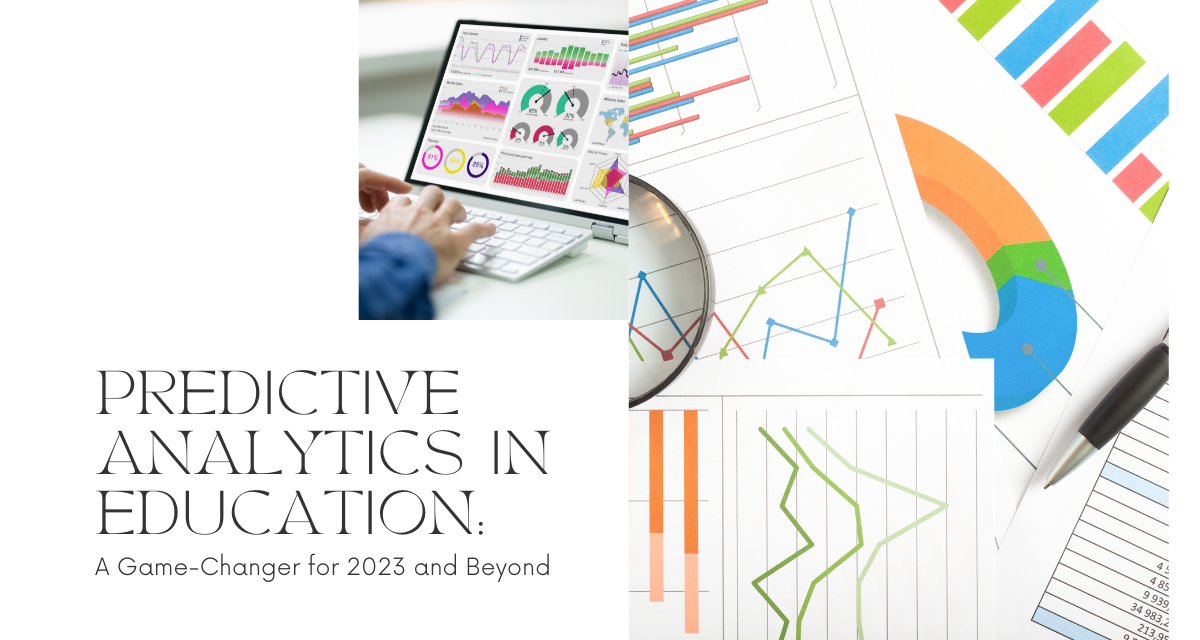The world of education, as we know it, is undergoing a massive shift. The digital revolution, spurred on by AI and big data, is not only changing the way we communicate, shop, and navigate, but it’s also transforming the way we learn and educate. Central to this educational revolution is the use of predictive analytics, a facet of artificial intelligence that uses historical data to predict future outcomes.
In 2023 and beyond, predictive analytics is set to become a game-changer for educational institutions, taking student learning experiences and institutional performance to a new level. Let’s dive deep into how this revolutionary technology is molding the future of education.
Predictive Analytics: The Basics
Before we proceed, it is essential to understand what predictive analytics entails. At its core, predictive analytics uses statistical algorithms and machine-learning techniques to analyze historical data and predict future outcomes. In the education sector, this data comes from various sources such as student grades, attendance records, online learning data and performance metrics, among other things.
Enhancing Student Learning Experiences
Predictive analytics is changing the way students learn by tailoring education to individual needs and capabilities. The days of one-size-fits-all learning are slowly fading into oblivion as we usher in an era of personalized learning.
Personalized Learning Paths: Analytics can identify individual learning patterns, strengths, and weaknesses. This data helps educators create a customized learning path that caters to the unique needs of each student. With predictive analytics, students struggling in a specific subject can receive additional support, while those who excel can be pushed to reach their full potential.
Early Identification of At-Risk Students: Analytics can predict students who are at risk of falling behind or dropping out based on their past performances, learning pace, and engagement level. Teachers can then intervene early, providing additional resources, mentorship, or personalized study plans to help these students.
Improving Engagement and Motivation: Predictive analytics can help educators understand what motivates their students. It can pinpoint the types of assignments, learning materials, and teaching methods that engage students the most. This understanding aids in the creation of a more engaging and motivating learning environment.
Revolutionizing Institutional Performance
Predictive analytics doesn’t just stop at improving student outcomes; it extends to transforming the overall performance of educational institutions.
Data-Driven Decision Making: Predictive analytics provides actionable insights into student and institutional performance. These insights are instrumental in strategic decision-making, from curriculum development to resource allocation, helping institutions function more efficiently.
Improving Retention Rates: By identifying at-risk students early, schools and universities can implement measures to improve retention rates. With the increasing cost of student acquisition, improving student retention is financially beneficial for institutions.
Streamlining Administrative Tasks: Predictive analytics can optimize administrative tasks such as scheduling, admissions, and resource management. For instance, analytics can predict the demand for specific courses, helping administrators manage schedules and resources effectively.
Challenges and Considerations
While the benefits of predictive analytics in education are numerous, they come with challenges that need addressing. Data privacy and security are paramount when handling sensitive student information. Institutions must ensure they’re adhering to local and international data protection regulations.
Moreover, while predictive analytics can be a powerful tool, it should not replace human judgment. Teachers, administrators, and policymakers should use it as an aid to decision-making, not as the sole basis of decisions. Human intuition, experience, and discretion are crucial in the complex, multifaceted field of education.
The Future of Predictive Analytics in Education
In the face of the rapid pace of technological advancement, predictive analytics’ potential in the education sector is limitless. Innovations such as adaptive learning platforms, AI-powered teaching assistants, and learning analytics dashboards are just the beginning. As we move further into the 2020s, we can expect predictive analytics to be increasingly integrated into various educational aspects, from classroom teaching to institutional governance.
Let’s explore some of these future applications:
AI-Powered Career Counseling: Predictive analytics can utilize a student’s interests, performance, and skills to predict potential career paths. This could revolutionize career counseling, offering students data-driven guidance to explore their career options.
Predicting Future Learning Trends: By analyzing global educational data, predictive analytics can identify emerging trends in education. This insight could help institutions stay ahead of the curve, preparing for changes in pedagogy, technology, and student needs.
Real-Time Adjustments in Learning: In the future, we can expect adaptive learning platforms to use real-time analytics to adjust learning materials as a student progresses through a course. This real-time adaptation could make learning more engaging and effective.
Community and Parental Involvement: Predictive analytics can also help identify how parental and community involvement impact student success, helping schools and universities develop strategies to foster this involvement.
The era of predictive analytics in education is just beginning. As technology evolves and we become more adept at deciphering the stories our data tells us, the potential for creating highly personalized, effective, and innovative educational experiences will continue to expand. We stand on the brink of a new horizon in education, with predictive analytics steering the ship toward a future where every student can thrive, and educational institutions can achieve new heights of excellence.
Predictive analytics is not just a buzzword; it’s a game-changer that is redefining the boundaries of education. As we advance into 2023 and beyond, it’s clear that predictive analytics will continue to drive the evolution of education, creating a learning landscape that is personalized, efficient, and constantly adapting to the changing needs of students and the world.



